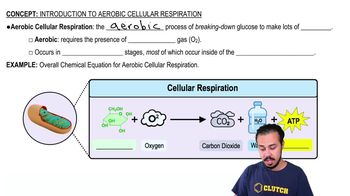Here are the essential concepts you must grasp in order to answer the question correctly.
ATP Structure and Function
Adenosine triphosphate (ATP) is a nucleotide composed of an adenine base, a ribose sugar, and three phosphate groups. It serves as the primary energy currency of the cell, providing energy for various biochemical processes. The energy stored in ATP is primarily found in the high-energy bonds between the phosphate groups.
Recommended video:
Hydrolysis of ATP
The hydrolysis of ATP involves the breaking of the bond between the terminal phosphate group and the rest of the molecule, resulting in adenosine diphosphate (ADP) and an inorganic phosphate (Pi). This reaction releases a significant amount of energy, which is utilized by the cell for various functions, including muscle contraction and active transport.
Recommended video:
Cellular Respiration
Cellular respiration is the metabolic process by which cells convert biochemical energy from nutrients into ATP, primarily through glycolysis, the citric acid cycle, and oxidative phosphorylation. While ATP is produced during this process, the question specifically focuses on the energy release during ATP hydrolysis, which is distinct from the energy generation during cellular respiration.
Recommended video:
Introduction to Cellular Respiration



